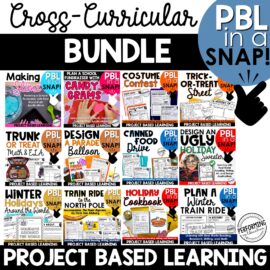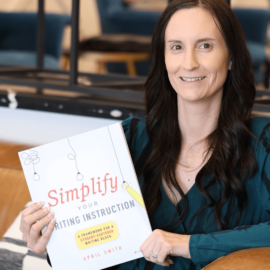Have you heard of project-based learning? Read this post to learn the main project-based learning benefits and find out how to get started!
What is Project-based Learning?
Project-based learning is a teaching method where students gain and apply skills by working on a long project where they complete an in-depth inquiry into a specific topic or question. Like all teaching methods, it’s not standalone. It can be added to the teaching you are already doing in your classroom. PBL allows for more real-world application and in-depth understanding of the concepts your students need to understand.
What are the benefits for students?
More “Buy-In” and Overall Engagement
Project-based learning is exciting for students. The first time I did PBL in my classroom, students were voluntarily doing extra research and activities for their project at home. I am constantly impressed by the level of interest students take in these projects. Student interest equals engagement, which will raise your test scores without all that boring test prep. In the long run, PBL helps students practice life skills like creating a budget or starting a business. You can find out more about choosing an engaging topic here.
Authentic Experiences with Standards & Skills
Students often struggle to understand why they’re learning these skills. Project-based learning allows them to see how multiple standards and skills work together in real-life situations. I plan my projects around our standards, but we use a real-world problem or scenario to apply the standards.
One of the main questions I get is: When do I teach the standards? Some standards are easy for students to learn through inquiry. Others, like basic reading and math skills, I teach in whole group mini-lessons and small group. I still do a lot of traditional teaching, but try to spend more of my time guiding students.
What are the benefits for teachers?
Independent Learning
In project-based learning, students work to investigate the concepts by making their own choices. Once you’ve set up the parameters, the students do all the work. You are just there to facilitate. This doesn’t mean that students do whatever they want. You still need to plan and pace out the tasks that help students work through the driving question. And you need to scaffold for students by meeting with them often and providing them organizers to keep track of their learning.
Grading Benefits
Project-based learning also involves far less paper than worksheets and far less grading. Students receive a final project grade and observational grades throughout.
Before I started PBL, I was done with random worksheets and grading stacks of busy work. Now I use checklists, rubrics, and self-assessment to give my students a fair grade.
Easy Differentiation
Another reason I love project-based learning is how easy it is to differentiate for the vast levels of learners I have in my classroom. We work within the project scenario, and I can easily modify the difficulty for each student. There’s also a lot of natural differentiation built in. You can read more about differentiation in project-based learning here.
How do I get started?
A good place to start is with my Project-Based Learning Planning Guide. In it, I go over the elements of PBL and give you a place to brainstorm your first project.




Jessica Martinez says
Is this appropriate for Kindergarten?
April Smith says
Hi Jessica! Yes, project-based learning has been done in kindergarten. It can be easily fused with the theme units that are already present.
Shannon says
Do you have any project based learning lesson for kindergarten? I would love to try this with my kindergarteners but have no idea who to start at an age appropriate level for them. Thanks in advance!
April, Curriculum Designer says
Hi Shannon! I only have PBL for 4th-6th. BIE.org might help you get started with it in Kinder. I do know some kinder teachers that do PBL and love it, but I don’t have any experience in primary.